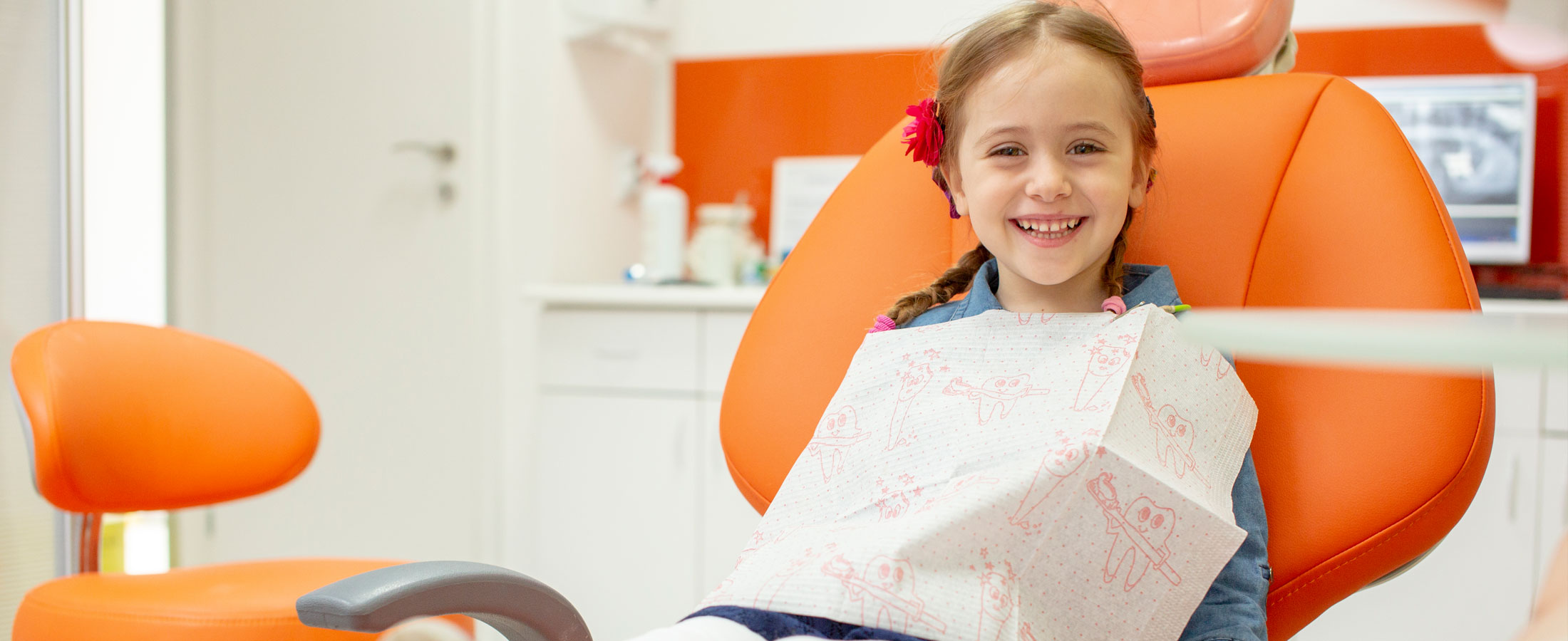Pediatric dentistry
When it comes to childhood, it is very important for children to gain confidence in the dentist, and at the same time to establish habits for healthy eating and oral hygiene. For this purpose, the correct approach on our side is important, as well as accustoming to the environment in which we work. The first contact with the dentist is crucial so that the child does not develop anxiety and discomfort when visiting a dentist’s office. Therefore, it is very important that the child’s first contact with the dentist is when there are no problems, in order to make it easier to get used to the environment in the practice, as well as to get to know his dentist better. Cooperation with parents is very important because they are the key factor in the child’s preparation for coming to the dental clinic. Pediatric dentistry should provide timely information on the correct oral hygiene of the teeth, the time of their change, the fissure of the fissures, and the possible malocclusions that occur during childhood.
When is the right time to start oral hygiene in children?
Milk teeth begin to grow at about 6 months of age and the process of their growth lasts until their third year. The time period when dairy teeth begin to grow is individual and it has no impact on their proper growth and development. By the age of 3 the child should grow up to 20 teeth. When the first tooth occurs, the child should slowly get used to using the toothbrush. Only when a child learns to spit water they can slowly be started with a toothpaste.
Treatment of baby teeth
It is very important to maintain healthy teeth until they are changed in order not to disturb the chewing function and speech in the child. Unfortunately, this is not always possible, therefore it is important to make timely remediation of the milk teeth.
Circular cavities
It is a specific form of caries that occurs in the milk teeth most often in the first years of life. Immediately after the eruption of the teeth in the upper part there are plaques under which the creme colour of the enamel is noticed. Very quickly there is destruction of the enamel to the spread of caries and its merging into large cavities. The caries spreads circularly (after which they got the name) in order to finally ruin the entire crown and break the tooth. Because of this, as well as in the prevention of other types of caries in our practice, we pay great attention to preventive dentistry. Regular examinations and fissure of the fissures in the children’s population influence the reduction of the appearance of all types of caries on one hand, as well as positively affect the child’s admission to regular visits and work in the dental office. Otherwise the children are very sensitive and are afraid of the dentist, so it is necessary to have a close relationship with the parent and the child.
Prevention
Soaking the fissures
In the first steel molars they can be very deep, which makes their cleaning difficult. Thus, they represent places where caries often occurs in childhood. The fissure of the fissures is done in order to prevent the appearance of cavities in the child’s age and thus reduce the child’s traumatic experience. The process is carried out with a buffer which is placed in the depth of the fissures where it hardens. Shedding is possible when teeth are not affected by cavities and it is therefore recommended this treatment to be done during the first year of the growth of these teeth.
